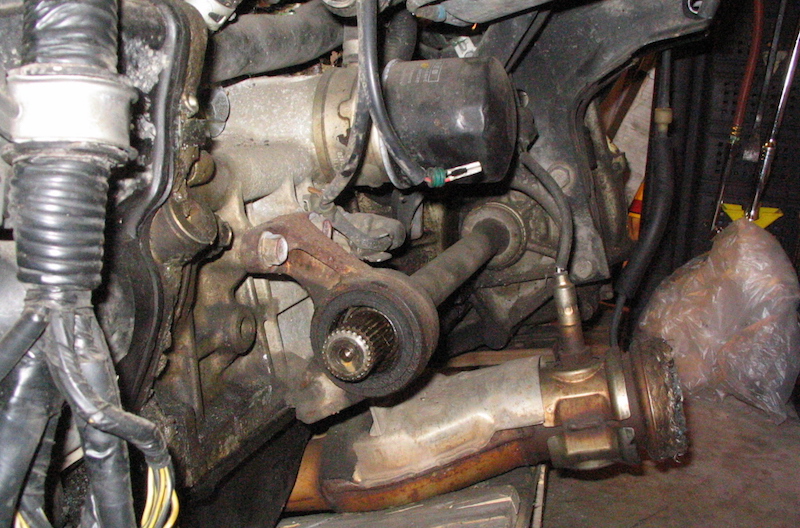Few driving situations are as panic inducing as when everything seems fine and then the engine suddenly stalls and shuts off. The lack of engine vacuum and electrical mean no power brakes or power steering, making for a dangerous situation. Here's a look at why this could happen and what you can do about it.

Source | Andrew Taylor
Engine starts but immediately dies
An engine that will start and run briefly has a different issue from an engine that stubbornly refuses to start. If you have a "check engine" light and problem code, connect a code reader or have it read for you to quickly narrow down the potential issues. Annoyingly, stalling issues may not have a code/"check engine" light, leaving you to do some investigating. Here are some of the problems you may face:
-
For a potential spark issue, look at the ignition coil(s). Make sure the connections are tight and the wires aren't cracked or burned looking. Replace if any issues are found. - This issue could be caused by an insufficient amount of fuel reaching the combustion chamber. For fuel issues, start by checking the fuel pressure. If it is low, look at the fuel pump, fuel pressure regulator, and injectors. Before the introduction of direct fuel injection, most vehicles did not have a sensor to read fuel pressure, meaning if the fuel pressure is low or off, you will not get a code, but you will have poor idle and stalls.
- Erratic idle before stalling could be a vacuum leak on the intake side. With too much air in the engine after the MAF sensor, the engine runs so lean it can't properly combust the fuel air mixture, and it stops operation. Check the gasket between the throttle body and intake manifold, and between the manifold and engine block. Also examine the vacuum lines for cracks, and replace if you find any damaged lines.
- On a new-to-you used car with an unknown maintenance history, stalling could even be caused by an air flow/backpressure problem. Check the condition of the air filter, and the exhaust from the manifolds back, looking for large dents or a plugged catalytic convertor. On an auction car or classic barn find, the fuel could have sat too long in the tank and degraded.
- If your engine idles fine in part and neutral but dies when you shift to drive, it could be something wrong with your transmission and should be checked.
Engine stalls while driving
If the vehicle starts up and drives normally for a few minutes before the stalling shows up, then take a look in these areas.
- Running fine at idle and low speeds around town but struggling and stalling under on-ramp acceleration likely means low fuel pressure. It has enough for idle, but can't keep up as RPMs increase under hard acceleration. Then the engine starts up again because startup requires little fuel. In this case, check the fuel pressure from the fuel pump. Surging and stumbling at medium load can also be due to a faulty EGR valve.
-
If the engine only stalls when turning, that means you should look for a failing idle air control (IAC) valve. At low engine speeds, the power steering pump draws engine power, while a failing IAC fails to increase engine speed, resulting in a stall. First, check the condition of vacuum lines and hoses around the throttle body, looking for damage. The IAC valve might need replacement, or it may just need a thorough cleaning. Throttle body cleaner is only a couple of bucks, and it takes just a few minutes to remove and clean the IAC valve and throttle body and then reassemble. - If RPMs are stumbling before the engine stalls and shuts off, a simple test can rule out the throttle position sensor. This is easily diagnosed with a code reader, so run a scan first if you suspect the TPS. Then locate it on the exterior of the throttle body, disconnect its electrical power, and remove the bolts holding it in place.
- If your vehicle operates normally, then dies when coming to a stop, that's is another sign to check the transmission. In this case, the torque converter locks to the engine, and since it can't disengage, when the wheels stop, the engine stops. Get it swapped out, as a new solenoid is much cheaper than a new transmission.







